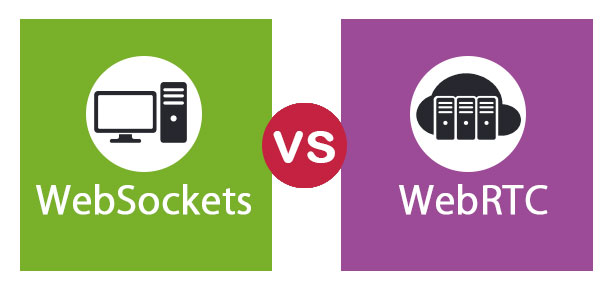Updated March 6, 2023
Difference Between WebSockets and WebRTC
- WebSocket is a computer communications protocol, which provides full-duplex communication channels over a single TCP connection.
- WebRTC is a free, open project that provides browsers and mobile applications with Real-Time Communications (RTC) capabilities via simple API’s.
WebSocket vs WebRTC are both projects that enable communication capabilities. These are two different ways to communicate with the server. WebSocket is a two-direction communication between the server and the client, which implies that both parties can communicate and exchange data simultaneously. With Web Real-Time Communication or WebRTC, modern web-applications can easily stream audio and video content to millions of viewers.
Head To Head Comparison Between WebSockets and WebRTC(Infographics)
Below is the top 7 difference between WebSockets vs WebRTC
Key Differences Between WebSockets and WebRTC
Both are popular choices in the market; let us discuss some of the major difference:
- WebSocket is a computer communications protocol, whereas WebRTC is a free open source project that enables browsers and mobile applications with communication capabilities.
- WebSockets’ focus is on rich web applications, whereas that of WebRTC is quick and easy peer-to-peer connections.
- Though both WebSockets vs WebRTC are communication protocols, WebRTC is used for more Real-Time Applications when in comparison to WebSockets.
- The Environment for WebSockets is Java, JMS, and C++, whereas that for WebRTC is Java and HTML.
- WebSockets have more Security concerns in comparison to WebRTC, where the route through which the network communication is made is the major concern of security.
- As it is comparatively new, WebRTC is available only on some browsers, whereas WebSockets are in more browsers.
- Scalability-wise, WebSockets use a server per session, whereas WebRTC is more peer-to-peer.
- WebRTC is designed for high-performance, high-quality communication of video, audio and arbitrary data. WebRTC apps need a service via which they can exchange network and media metadata, a process known as signaling. WebSocket, on the other hand, is designed for bi-directional communication between client and server. It is possible to stream and share audio and video over WebSocket but, the API is not robust enough like their counterpart features in WebRTC.
WebSockets vs WebRTC Comparison Table
Below is the 7 topmost comparison between WebSockets vs WebRTC
| The basis of comparison | WebSockets | WebRTC |
| Definition | WebSocket is a computer communications protocol, which provides communication channels over a single TCP connection. | WebRTC is a free, open project that provides browsers and mobile applications with Real-Time Communications capabilities via simple API’s. |
| Overview |
|
|
| Uses |
|
|
| Architecture | The architecture for WebRTC consists of the Layers:
|
WebRTC has a complex architecture. WebRTC architecture has three layers.
|
| Environment | Java, JMS, C++ | Before building WebRTC applications, it is important to have the coding environment set. Firstly we should have a text editor where we can edit HTML and JavaScript. Another requirement is the server to host the HTML and JavaScript files. |
| Features |
|
|
| Security | Security concerns for WebSockets involve:
|
In order to connect one user with another, we should find a clear path around your own network and the other user network. There may be several layers for security in this case. To increase security and allow multiple users to use the same IP address, the router hides your own network address and replaces it with another one. |
Conclusion
Having seen the comparison and differences of WebSockets vs WebRTC, we come to know that WebSockets vs WebRTC are both Communication enabling protocols. WebSockets enable two-way communication via a single TCP communication, whereas WebRTC enables real-time peer-to-peer communication in the browser and mobile applications. Both WebSockets vs WebRTC have Java as their primary environment. Though WebSockets API’s are enabled with the power of transferring video communication, it is, however, not as robust as WebRTC.
Recommended Articles
This has been a guide to the top difference between WebSockets vs WebRTC. Here we also discuss the key differences with infographics and comparison table. You may also have a look at the following articles to learn more.




